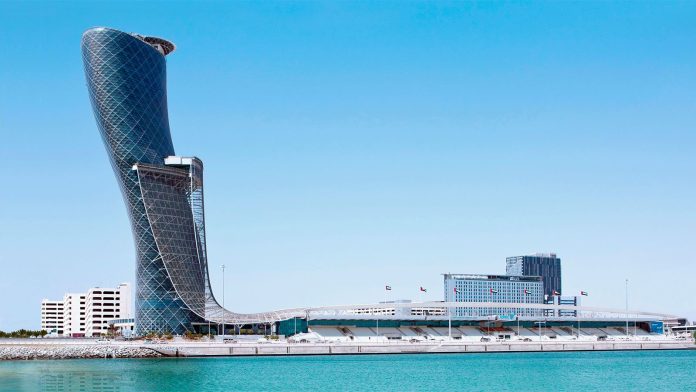In the heart of Abu Dhabi stands a remarkable architectural wonder that defies the laws of physics – the Capital Gate Tower. Nicknamed the “Leaning Tower of Abu Dhabi,” this skyscraper leans at an astonishing 18-degree angle, earning it a place in the Guinness World Records as the world’s furthest-leaning man-made tower. But behind its striking appearance lies a tale of ingenuity, innovation, and the relentless pursuit of engineering excellence.
Challenges Faced:
Unstable Ground Conditions:
One of the primary challenges faced by engineers during the construction of the Capital Gate Tower was the unstable ground conditions. Situated on reclaimed land near the Arabian Gulf, the site posed significant challenges due to its soft soil and proximity to the water table. To overcome this hurdle, engineers implemented advanced foundation techniques, including a dense network of reinforced concrete piles driven deep into the ground to provide stability and support for the towering structure.
Structural Design Complexity:
Designing a skyscraper that leans at an 18-degree angle is no small feat. Engineers had to devise innovative solutions to ensure the tower’s structural integrity while accommodating its unique lean. Advanced computer modeling and simulation techniques were employed to analyze the complex forces acting on the building and optimize its design accordingly. The result is a sophisticated structural system comprised of a central concrete core, diagonally inclined columns, and a series of steel tendons that work in harmony to counteract gravitational forces and maintain the tower’s stability.
Wind and Seismic Loads:
Abu Dhabi is no stranger to extreme weather conditions, including high winds and seismic activity. Engineers had to account for these environmental factors during the design and construction of the Capital Gate Tower to ensure its resilience and durability. Wind tunnel testing and dynamic analysis were conducted to assess the tower’s response to wind-induced vibrations and optimize its aerodynamic shape. Additionally, seismic isolation measures, such as base isolators and damping systems, were incorporated into the tower’s design to mitigate the effects of earthquakes and enhance its overall safety.
Construction Logistics:
Building a leaning tower requires meticulous planning and precise execution. Construction crews faced numerous logistical challenges, from the transportation and installation of specialized building materials to the coordination of complex construction activities at extreme heights. Advanced construction techniques, such as prefabrication and modular assembly, were employed to streamline the building process and minimize construction time. Additionally, stringent quality control measures were implemented to ensure that each component of the tower met the highest standards of craftsmanship and structural integrity.
The Capital Gate Tower in Abu Dhabi stands as a testament to the boundless creativity and technical expertise of the engineering profession. Despite facing formidable challenges, engineers succeeded in creating a groundbreaking architectural masterpiece that pushes the boundaries of what is possible in skyscraper design. As a symbol of innovation and achievement, the Capital Gate Tower serves as a shining example of human ingenuity and the power of collaboration in overcoming seemingly insurmountable obstacles.























